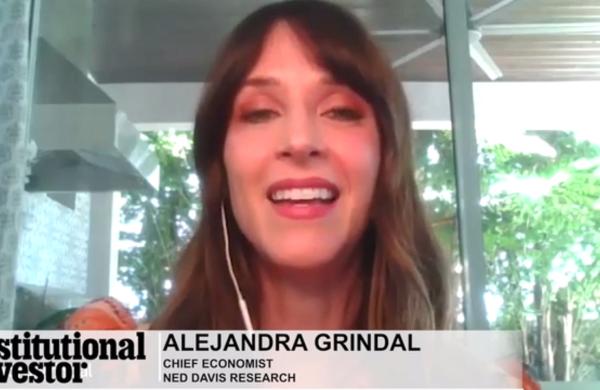In most markets money managers would be ecstatic if assets under management grew by nearly 50 percent in a year. But India is not like most markets.
Regulatory reform continues to cloud an otherwise bright outlook for the country’s fund managers. A series of changes designed to reduce costs and increase transparency for mutual fund investors — capped by the abolition last year of entry-load fees — has put pressure on profit margins without, as yet, spurring a big increase in investor demand. With most inflows going into relatively low-margin fixed-income funds, fund management companies are having to cut costs and develop new business lines, such as subadvising for international fund managers, to generate growth. The strategy may be sound, but it may take time to deliver results, industry executives say.
“Too many changes have happened too fast, which has slowed down the industry growth for the short term,” says Sundeep Sikka, CEO of Reliance Capital Asset Management Co.
Reliance retains its place at the top of the India 20, Institutional Investor’s fifth annual exclusive ranking of the country’s asset managers, but its lead over rivals has narrowed. The firm’s assets grew by 25.8 percent, to $24.5 billion, in the 12 months ended March 31. That lagged the industry’s growth pace, as overall assets rose 47.1 percent to 6.14 trillion rupees ($136.4 billion), according to the Association of Mutual Funds in India, the industry’s representative body. Assets of the India 20 grew by an even faster 64.7 percent, to $150 billion, reflecting growing concentration in the market. Reliance’s sluggish showing reflected a big decline in the firm’s two money market funds and a slump in sales of new fixed-maturity income funds limited the firm’s growth rate.
Other leading firms enjoyed faster growth. ICICI Prudential Asset Management Co. holds on to second place, with $18 billion in assets, up 81 percent for the year. UTI Asset Management Co. gains one place, to third, after its assets rose 89.1 percent, to $17.8 billion. HDFC Asset Management Co. slips one place, to fourth; its assets rose 78.2 percent, to $17.3 billion. Birla Sun Life Asset Management Co. retains fifth place, with $11.9 billion in assets, up 57.5 percent from a year earlier.
All of these players are refining their strategies for a new regulatory environment that is deterring the launch of new funds.
The industry grew rapidly earlier this decade through a proliferation of new funds. A booming stock market attracted waves of retail investors, while lucrative fee practices, under which fund companies levied as much as 6 percent in initial expense charges and distributors earned a bigger cut for selling new rather than existing funds, encouraged the promotion of new products.
Concerned that those fee practices were encouraging distributors to churn investors from one fund to the next new thing rather than promoting long-term investment, the Securities and Exchange Board of India introduced a number of reforms in recent years. Beginning in 2006 the regulator moved to abolish initial expense charges and required fund companies to meet sales and distribution expenses from entry-load fees, a levy charged for distribution expenses. In 2008, SEBI issued a rule barring fund companies from launching new funds with objectives similar to existing products. The most-recent change came in August 2009, when the regulator banned the imposition of entry-load fees, which were 2.5 percent for equity funds and 0.5 percent for most fixed-income funds. Instead, distributors now have to negotiate an advisory fee directly with fund investors. The regulator said it made the change “to bring about more transparency in payment of commissions and to incentivize long-term investment.”
Industry executives say the changes will ultimately be good for investors, but it will take some time for retail customers to get used to paying advisory fees rather than having distribution expenses met indirectly through entry loads. “While SEBI is right in theory, the reality is that the manufacturer pays a commission to the agent in most financial products, including even sovereign-guaranteed products,” says Dhirendra Kumar, CEO of Value Research of India, a mutual fund research company.
The changes have dramatically slowed the rate of product launches. The industry attracted 362 billion rupees with new fund offerings for the year ended March 31, down from 1.02 trillion rupees the previous year and 1.61 trillion two years earlier.
The bulk of the launches continues to come in the fixed-income sector, particularly fixed-maturity plans, closed-end funds with a finite life — typically one to three years — that invest in corporate bonds with the same maturity. Income funds accounted for 51 percent of industry assets at the end of March, up from 47 percent a year earlier, according to data from AMFI.
Equity funds accounted for 28 percent of industry assets, up from 23 percent a year earlier, but that increase reflected merely the dramatic rise of the Indian stock market rather than fresh inflows from Indian investors. The Bombay Stock Exchange’s benchmark Sensex 30 index soared 80.5 percent in the 12 months ended in March.
“The Indian mutual fund industry is actually two different and distinct businesses: retail equity and institutional debt,” says Rajiv Anand, managing director and CEO of Axis Asset Management Co. Equity assets generate fatter profit margins, and fund companies are frustrated by their inability to connect with retail clients at a time of strong growth in the underlying market. “If you remove the stock market appreciation, equity assets haven’t grown since 2001,” notes Value Research’s Kumar. The fund industry’s equity assets amounted to 514 billion rupees in March 2001. Between then and March 2010, the Sensex rose roughly fivefold, but equity assets lagged, rising only fourfold, to 2 trillion rupees.
The number of equity fund folios, or accounts, fell by 2.3 million, to 39.4 million, between March 2009 and September 2010. “The reduction in number of equity fund folios is alarming, especially at a time when the stock market is near its all-time high,” says Saurabh Nanavati, chief executive of Religare Asset Management Co., which rises four places, to No. 14, in the India 20.
“Despite good performance of equity funds, the industry has not been able to communicate it to consumers,” says Ved Prakash Chaturvedi, who resigned as managing director of Tata Asset Management Co. (No. 10) last month. “That is the challenge.”
The shift from entry loads to advisory fees has had a further impact by favoring players with the widest distribution networks, especially banks. Those companies are finding it easier to charge advisory fees to their customers, says Upendra Kumar Sinha, chairman and managing director of UTI Asset Management, India’s oldest fund house, and chairman of AMFI. “Large distributors like banks have gained prominence, while small independent financial advisers have lost market share,” he says.
Largely as a result of the regulatory changes, profit margins in the fund management industry fell to 12 basis points on assets under management in the year ended March 31 from 14 basis points the previous year, Sinha says. The decline is particularly notable considering that 2008–’09 was an exceptionally bad year, with the global financial crisis causing assets to drop by 21.8 percent overall for firms in the India 20.
In response to the cost pressures, money managers have been cutting staff and closing offices, particularly outside India’s major cities. “It is sad that the small investor is not being serviced as well as before, and he has missed the recent bull market while foreign institutional investors are making money,” says Reliance’s Sikka.
Fund companies are also stepping up their efforts to educate retail investors about the advantages of mutual fund investing, reaching more than 29,000 participants in hundreds of meetings between April and July alone. Companies and AMFI, the industry group, are also training IFAs in a bid to make them true advisers rather than mere product-pushers. Reliance has set up its own program, the Edge Learning Academy, and sponsors IFAs to pursue the Certified Financial Planner certification.
Money managers are adding new business lines in an effort to spur growth and profits. “Our new areas are managed portfolios and offshore funds,” says Religare’s Nanavati. Similarly, Reliance is boosting its subadvisory business for international fund managers. “We have an advantage,” says Sikka. “The India-focused offshore funds, which are advised from India, have performed better than those that aren’t.”
New products are also in the offing. “We have been focusing on capital-protection funds, asset-allocation funds and other hybrid funds such as monthly income funds,” which invest up to 90 percent in debt and 10 to 15 percent in equities, says Naval Bir Kumar, president and CEO of IDFC Asset Management Co. The firm slips one place, to No. 12, in the ranking. “We are also increasing the range of products for high-net-worth investors.”
The cost pressures and regulatory changes may be making life difficult for fund managers, but they aren’t deterring new entrants. Companies continue to see strong fundamentals in India’s solid household savings rate of 23 percent of GDP. With only 8 percent of household savings currently going to mutual funds, companies believe the industry has great upside potential in the medium-to-long term.
Over the past 18 months several firms have announced plans to enter the market. In July 2009, Japan’s Nomura Holdings agreed to buy a 35 percent stake in LIC Mutual Fund Asset Management Co., the No. 6 firm in our ranking. Nomura will pay a price that values the business at 2.7 percent of assets. In January, U.S. fund manager T. Rowe Price Group acquired a 26 percent stake in UTI Asset Management at a price that valued UTI at 3.2 percent of assets. Earlier this year U.S. insurer Prudential Financial set up a new fund arm, Pramerica Asset Managers, which launched its first product, a money market offering, in August. In October, BNP Paribas withdrew from its joint venture, Sundaram BNP Paribas Asset Management Co., to concentrate its efforts on Fortis Investment Management, which it acquired in 2009. SEBI had told the French bank it could operate only one mutual fund company. Sundaram BNP Paribas, which has been renamed as Sundaram Asset Management Co., gains one place, to No. 13.
Fund companies are learning to live with the new regulations. To succeed, they need to focus on fundamentals — generating strong performance and providing good customer service. As Value Research’s Kumar puts it: “There is convergence of everyone’s interest, and churn has been eliminated. Fund companies do not need to create a large number of products; performing products will pull investors.”






